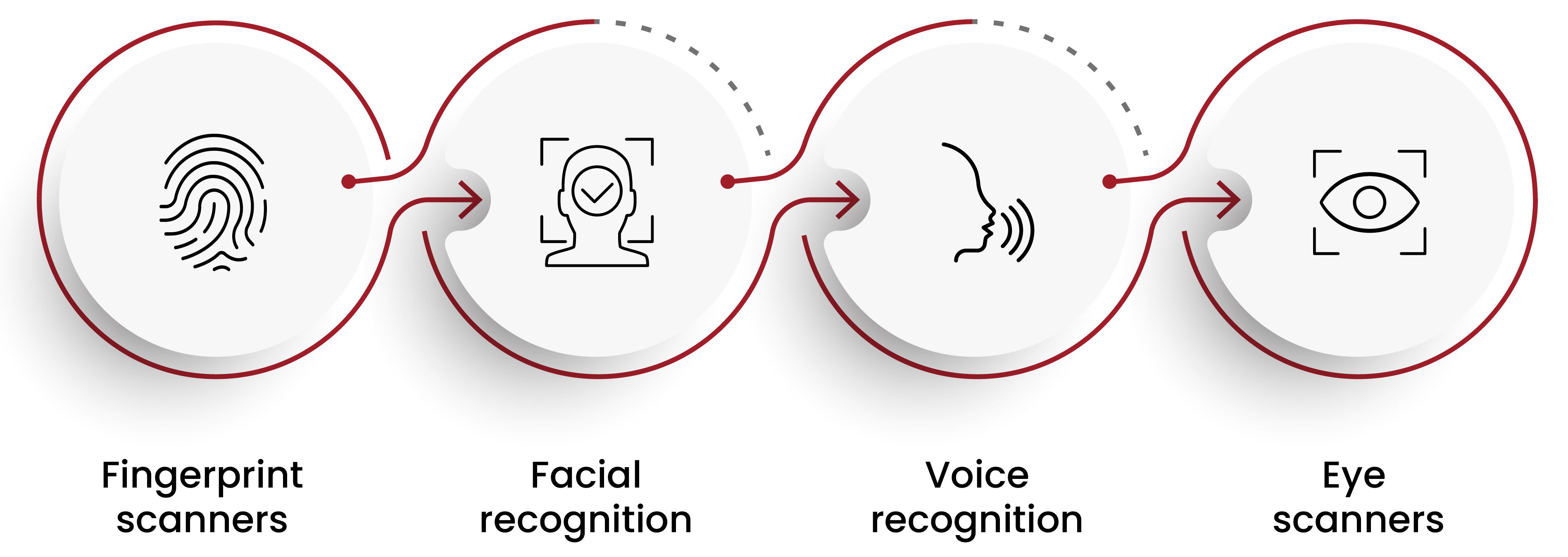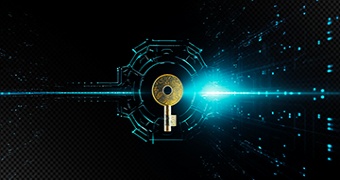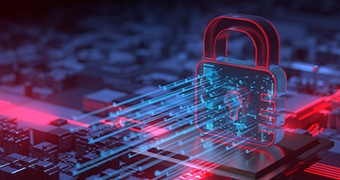We are living in a world where artificial intelligence (AI) is transforming eve....
Biometric Data Protection: Safeguarding Your Digital Identity

In today's fast-paced digital world, protecting our online identity has become more critical than ever. With cyber threats on the rise and the growing reliance on biometric data for authentication, mastering the protection of this unique information is essential.
Biometric data, which includes fingerprints, iris scans, and facial recognition, not only provides security and convenience, but also presents unique challenges when it comes to preserving individual privacy. In this article, we explore the importance of protecting biometric data protection and provide useful advice for enhancing online identity security.
What Is Biometric Data?
Biometric data refers to the distinctive physical or behavioral traits that uniquely identify individuals.
Unlike easily forgotten passwords or weak PINs, biometric data is intrinsically linked to a person and notoriously difficult to replicate. This inherent uniqueness makes it an appealing authentication method for various purposes, including unlocking smartphones, accessing bank accounts, and gaining entry to secure facilities.
Types of Biometrics Used for Authentication
Although numerous biometric methods exist for authentication, the most prevalent types of biometric identifiers include:
- Fingerprint Recognition: Fingerprint recognition is one of the oldest and most widely used methods of biometric authentication. It analyzes the unique patterns and ridges present on an individual's fingertips to verify identity. Fingerprint sensors are commonly found on smartphones, laptops, and access control systems. More than 70% of Americans have used biometrics which includes scanning fingerprints.
- Iris Recognition: Iris recognition uses the unique patterns in the iris or the colored part of the eye, to authenticate individuals. When compared to other biometric modalities, iris scans are highly accurate and less prone to false positives, with an accuracy rate of around 7%. This technology is commonly used in high-security environments such as airports and government buildings.
- Facial Recognition: Facial recognition technology analyzes facial features, such as the size and shape of the eyes, nose, and mouth, to verify identity. It can be used in a variety of contexts, including smartphone unlocking, surveillance systems, and airport security checkpoints. However, issues have been raised about the potential for bias and privacy violations associated with facial recognition technology. According to a recent research, 13% of the population rely on facial recognition for authentication.
- Voice Recognition: Voice recognition relies on the unique characteristics of an individual's voice, such as pitch, tone, and cadence, to authenticate identity. Voice biometrics is widely used worldwide, accounting for 15% of telephone banking systems, customer service, and voice-activated devices such as smart speakers.
- Behavioral Biometrics: In 2022, behavioral biometrics hit a U.S. $1.45 billion market size globally, projected to grow at a 27.3% CAGR from 2023 to 2030.The behavioral biometrics method analyzes patterns in human behavior, such as typing rhythm, mouse movement, and gait as a way to authenticate users. Unlike physical biometrics, which are static, behavioral biometrics capture dynamic characteristics that can change over time. This form of authentication is often used for continuous authentication and fraud detection in online banking and e-commerce platforms.

Biometric Data Challenges and Considerations
- Privacy Concerns: Biometric data offers enhanced security measures, yet it also evokes significant privacy concerns. Protecting users' privacy necessitates a clear understanding of data collection, storage, and usage. Transparency and obtaining informed consent are pivotal in addressing these concerns.
- Data Breaches: The repercussions of biometric data breaches can be severe. Unlike changing a compromised password, biometric identifiers such as fingerprints or retinal patterns cannot be altered. The 2019 breach of Suprema Biostar 2 underscores this vulnerability, exposing over a million fingerprints, facial recognition data, and personal information due to inadequate server security. Secure storage and robust encryption are imperative safeguards against such breaches.
- False Positives and Negatives: Despite advancements, biometric systems are not infallible. False positives, granting access incorrectly, and false negatives, denying legitimate users, are potential pitfalls. Ensuring regular system updates and accuracy checks is essential to mitigate these risks.
Recent incidents have starkly illustrated the real-world implications of these challenges. In October 2023, a major healthcare provider's biometric database was compromised, affecting millions of patients and exposing fingerprint and facial recognition data. The breach exposed fingerprint and facial recognition data, raising concerns about potential identity theft and fraud. Additionally, Clearview AI, a controversial facial recognition company, experienced a data breach in October 2023. The breach exposed over 3 billion facial images scraped from social media platforms, raising concerns about mass surveillance and privacy violations.
Efforts to address biometric data breaches include:
- Improved Encryption and Authentication Protocols: Implementing end-to-end encryption and secure enclave storage enhances data security.
- Regulatory Compliance: Adherence to regulations such as GDPR and CCPA ensures legal compliance and reinforces data protection measures.
- Consumer Awareness: Increasing awareness about biometric data privacy fosters transparent practices and empowers users with control options.
- Continuous Monitoring and Auditing: Implementing real-time anomaly detection and security assessments facilitates prompt breach detection and response.
These measures, coupled with ongoing research and collaboration, are crucial in safeguarding biometric data and mitigating associated risks.
Best Practices for Biometric Data Protection
To safeguard biometric data and protect online identities, individuals and organizations can implement the following best practices:
- Choose Reputable Providers: Opt for trusted providers with robust security measures in place. Research their data protection policies and ensure compliance with industry standards. For example, organizations like Apple Inc. have demonstrated success in protecting biometric data through their rigorous provider selection process, ensuring compliance with industry standards and research-backed data protection policies.
- Multi-Factor Authentication: Combine biometrics with additional security measures like passwords or PINs to improve protection against unauthorized access. Financial institutions, such as banks, commonly employ this practice to enhance security for online banking services, ensuring that access to biometric data is only granted after successful multi-factor authentication.
- Regularly Update Devices and Software: Ensure devices, operating systems, and applications are regularly updated with the latest security patches to minimize vulnerabilities. Healthcare organizations, including hospitals and medical research institutions, prioritize the regular updating of medical devices, operating systems, and software applications to safeguard biometric data used for patient identification and medical research purposes.
- Encrypt Biometric Data: Utilize encryption for both transit and stored biometric data to render it unreadable to unauthorized parties. Technology companies, such as Google and Microsoft, provide comprehensive documentation and resources to educate developers and users about best practices for securing biometric data, including the implementation of robust encryption techniques.
- Implement Strong Access Controls: Limit access to biometric data to authorized personnel or systems and employ strict authentication mechanisms. Government agencies, such as immigration departments or law enforcement agencies, handle sensitive biometric data for identity verification purposes and implement strong access controls to protect against unauthorized access.
- Educate Users About Security Risks: Raise awareness among users about biometric data protection and provide training on identifying and reporting suspicious activities. Tech companies prioritize user education on security risks associated with biometric data, offering training sessions, webinars, and online forums to empower users to take proactive measures to protect their biometric information.
- Review Privacy Settings Regularly: Adjust privacy settings on devices and online accounts to align with security preferences and disable unnecessary features that may pose risks to biometric data. Government agencies and financial institutions regularly review and adjust privacy settings on their systems and databases to minimize the risk of unauthorized access to biometric data.
Complying with Data Privacy Regulations
Data protection regulations such as GDPR and ISO/IEC 27701 are crucial for safeguarding biometric data's security and privacy. They provide guidelines on how to gather, manage, and keep track of personal data, including biometric data. Organizations dealing with biometric data need to follow these rules to protect people's privacy and reduce the risk of security breaches.
Specialized training courses are available to help organizations comply with these regulations and understand the best practices for protecting biometric data. These training courses cover various topics, including data encryption, secure storage methods, and compliance requirements. They provide organizations and individuals with the necessary knowledge and skills to properly protect biometric data.
By investing in these comprehensive training programs, businesses can demonstrate their commitment to data protection and ensure compliance with regulatory standards. This commitment builds trust and confidence among customers and stakeholders.
However, it is crucial to understand the potential fallout of not following these regulations. If organizations fail to comply, they could face hefty fines imposed by regulatory bodies, impacting their financial stability. Moreover, legal repercussions may arise from affected individuals or groups, resulting in costly lawsuits and damage to the organization's reputation. Non-compliance could also lead to missed business opportunities and strained relationships with customers and stakeholders. Therefore, ensuring adherence to data privacy regulations is paramount to safeguarding the organization's integrity and financial well-being.
Conclusion
As biometric authentication continues to gain popularity, mastering biometric data protection is crucial for safeguarding personal identity and sensitive information online. By understanding the risks associated with biometric data breaches and implementing best practices for security, individuals and organizations can mitigate threats and ensure the integrity of their online identities. With proactive measures and vigilant monitoring, biometric authentication can offer both convenience and peace of mind in an increasingly digital world.
How Can PECB Help?
At PECB, we are committed to helping individuals navigate the complexities of data security and privacy successfully. Among our diverse range of training course offerings, we also provide personalized training courses for GDPR and ISO/IEC 27701 compliance. Our dedication is a reflection of our commitment to help individuals be equipped with the necessary knowledge and abilities to succeed in the ever-changing fields of privacy and data security.
- PECB Certified ISO/IEC 27701 Foundation
- PECB Certified ISO/IEC 27701 Lead Implementer
- PECB Certified ISO/IEC 27701 Lead Auditor
- GDPR Certified Foundation
- GDPR - Certified Data Protection Officer (DPO)
About the Author
Teuta Hyseni is the Senior Web Content Specialist at PECB. She is responsible for updating and managing website content. If you have any questions, please do not hesitate to contact her at: digital.content@pecb.com.


